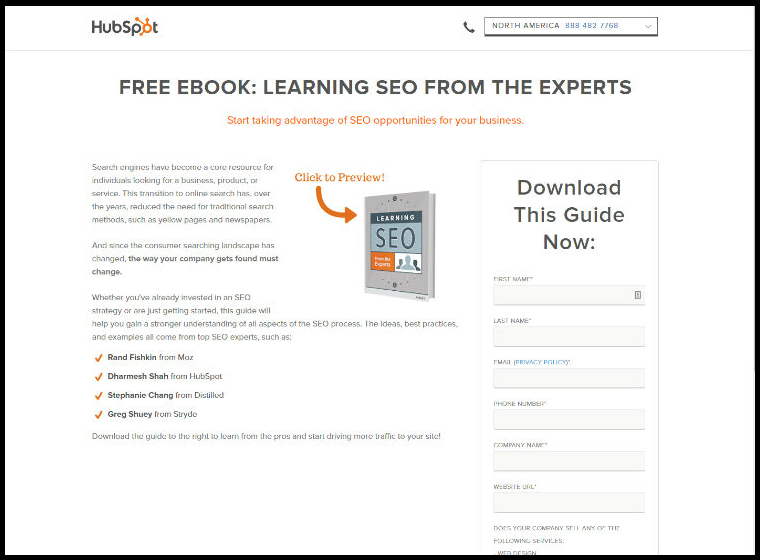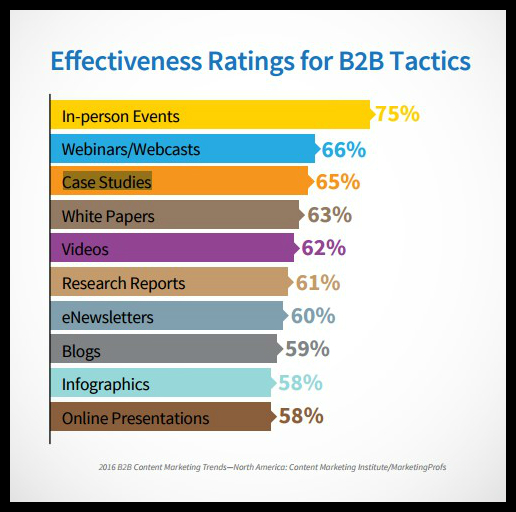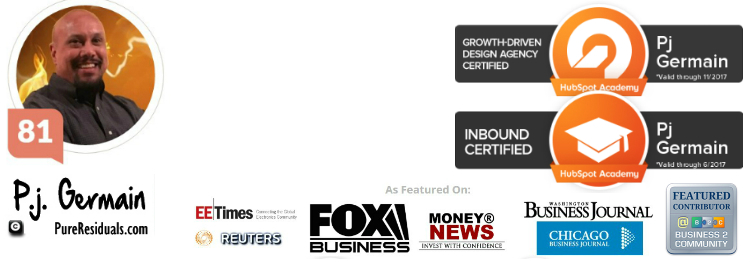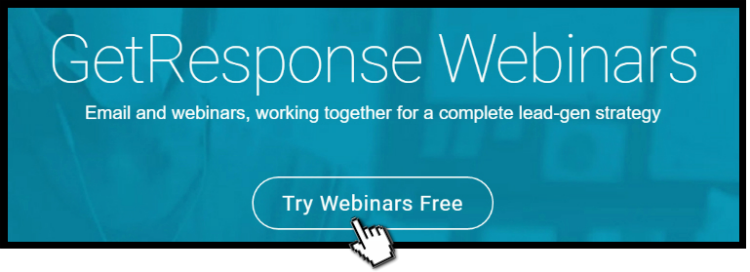Content Marketing Strategies for Lead Generation
Sometimes you can feel totally lost when you try to think of creative approaches to generating leads for your online business.
During the aftermath of Google’s Panda and Penguin news, which, since you’re informed, given a devastating hit too many websites, the Google search giant hasn’t been coy regarding its aspiration to find fresh, related, and unique content on websites.
You know this workout. “Content is king” continues to be the statute on many marketers’ heads for more than a couple of years. If you ask me, developing a solid content marketing strategy has shown to be very powerful when done correctly.
Having said that you probably already know everything. What you want to find out is how you can better use content marketing to generate leads. What sorts of content brings success, and which don’t? More to the point, how can you use particular types of content material to capture qualified prospects?
Here are a few of the best techniques that I’ve used, tried, and found to deliver exceptional results.
1. Create an eBook
In accordance with a market estimation by PricewaterhouseCoopers, total earnings from e-book sales are estimated to reach nearly $8.8 billion in 2018, a growth that could reach over 3,000% since the year 2008. What’s extra, America is envisioned to hit 112 million e-book subscribers by 2020.
All of that symbolizes a massive market just hanging around to be knocked, which explains why writing and launching an e-book is a technique that has shown to be successful at catching sales opportunities.
Of course, you don’t have to charge for your e-book. To be a cost-free useful resource, it gives worth up front, helping the chance of adding leads into your sales channel. I love e-books simply because they allow me to do 3 important points easily and successfully:
- Educate possible leads
- I’ll show a few things I know
- Get sales opportunities in the sales funnel
Let me stroll through each of those details.
Help Potential Leads
A well-written e-book needs to provide something of true value to visitors who can move on with particular solutions to issues that motivated them to read the content.
Your e-book generally is the very first communication point between you and your reader. Therefore it’s definitely important that you provide the information and facts you claimed on your squeeze page or email. Otherwise, you’ll finally end up harming your name and any connection you may have had with your target audience.
Clearly Show Anything You Know
Are you looking to provide people the things you know about a specific topic or business? Then simply jot it down in an e-book. Not like blog articles — even lengthy ones — a great e-book truly allows you to discuss a topic in an in-depth approach. The better you search a topic, the better information and facts readers can get from you. This, in return, increases your e-book’s worth.
People will find you and your e-book as a unique reference to important information and will anticipate getting more useful information from you later on.
Get Leads in the Sales Channel
Probably the most ignored part of creating an e-book is it lets you get your readers’ contact information, properly placing them in your sales funnel. The achievements of this step, however, eventually is determined by your squeeze page, that is in which you let visitors understand what information and facts are in your e-book, the reason why it’s truly worth their time, and the reason why it’s honest to ask about email addresses as a swap.
When building a squeeze page for the e-book, I prefer to consider a synopsis of the primary aspects of a great squeeze page, just like the example by Wishpond.

This image above is a HubSpot’s squeeze page for its e-book, Learning SEO. It consists of the 7 main features:
- Heading
- Subheading
- Explanation
- Features
- E-book image
- Form
- Call to action
Also, you can choose Unbounce’s e-book squeeze page template just to save time. Forming an llc in california is easy and affordable. Check out MoneyBrighter for more information
2. Organize a Webinar
I’ve already been amazed by the pure strength of online seminars to make a good influx of targeted customers. Just like e-books, the achievements of a webinar is determined by it delivers anything of true value to people.
Only if your webinar is recognized as to provide value the people will gladly give you their contact information and details. Needless to say, as a swap, you need to offer true hands-on coaching, types of real-life applications, and true knowledge — almost all when they sit in the convenience of their homes or workplaces.
For hosting your webinar, I like to recommend including these components.
Your subject should be highly relevant to your target audience and shown in a way that it leads to interest.
To put it differently, you intend to sell it off to your visitors, whose very first reaction will be to ask you, “What’s inside it for me?” Where should you get started?
Think about a welcoming title, provide belongings strongly related to the topic, and make your demonstration sleek and on-topic.
3. Host Real-Life Occasions
Trade events play a vital part in any content strategy. I imagine them as a road to link the gap between the World Wide Web and the real world. They help you work together and know about possible leads in ways that’s simply not possible — at least if you ask me — through electronic mail blasts and social networking comments.
It may look weird to present real-life events in a post about content marketing, but you need to hear me out.
Content material is what propels the event’s success, and plays a role in its ongoing part in your marketing and advertising funnel.
4. Produce White Papers and Tutorials
You bet, I understand: White papers are generally about old-school since they come. However, they’re often around for a good cause — they do a good job.
Certainly with Roanne Neuwirth who authored, “White papers still make a difference.” You don’t have to refer to them as “white papers,” that smacks of old-school corporate monotony. You may call them anything you want. The idea is this: White paperish (word up) information will generate qualified prospects.
What should really your white paper include so that it is good for lead generation?
Let’s not confuse this.
This is a basic and simple four-point course of action. Credit goes to Nick Cavalancia for distilling it in this easy way:
Headline — Capture the reader’s interest straight away, all while you are showing the paper’s subject material.
Content — Talk about your headline, homing in on the specific part of the customer’s purchase quest (a little something you’ll should make a decision on). In any case, the content needs to be useful, if it’s not then your readers won’t get your service or product.
Promotional strategy — Deliver copies of your white paper to the sales staff and let them explain you its content material. Add your white paper in the social networking outreach plan, marketing with an email campaign, or even external marketing initiatives.
Lead approach — As a substitute for pursuing up with your “buy now” call to action, you can reply to your lead in the most harmless way possible: providing more details. Possibly send an e-mail request if your reader wants to get one more white paper, subscribe to your next webinar, or sign up for a future event.
5. Write Case Studies
Case studies can explain experiences — good experiences. It may be a success story of a service or product, or a plan (or strategies) to a specific issue experienced by prospects, detailed with the measures to fix the problem.
Although a few entrepreneurs get an aversion to their case studies for the reason that they’re usually monotonous and uninspiring, they are not valuable in converting ordinary readers into buyers. Studies have shown that case studies are the particular third-most powerful Business to Business content marketing approach.

I don’t know what you think. However, I perceive serious qualified prospects.
You can consider below guide on how to create a case study, which can be split up into the following:
Summary or synopsis – Start your case study with a conclusion of the issue and a sneak peeks of the solution or measures taken to fix it.
Real individuals — Real interviews are exactly what truly produce fantastic case studies get noticed. A case study has to tell a story, and that story is best suited while it’s told from the customer’s viewpoint.
Pics and vids — Media sources make case studies more interesting, attractive to both verbal and visual learners. Index charts are specifically helpful, presenting and even more history to your case study’s details and making evaluations between products and solutions or happenings more useful.
Solution — When you first speak about the solution, continue to keep your larger target audience in mind and take your reader through the measures you used to resolve the issue in an obvious way.
Content Marketing Strategies for Lead Generation: Final Thoughts
Since you may have thought, there are lots of uses of content to crank out sales opportunities. On the other hand, it’s important also to understand that there isn’t any one-size-fits-all option to content marketing and generating leads. With respect to the dynamics and business of your company, one strategy may be more efficient than the other.
On top of that, you should think about how you’re planning to evaluate your content marketing strategies. A 2015 report by Ascend2 discovered that conversions are the most often used metric for computing content marketing performance, accompanied by a lead value, and online traffic.







